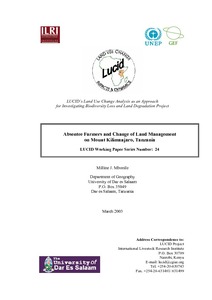A conceptual framework for the assessment of tropical secondary forest dynamics and sustainable development potential in Asia
In this paper, we present an intensification model based on the intensity of exploitation and use of forests and forest lands as a relevant framework for analysing the appearance, dynamics, and evolution of different types of secondary forests. The systematic driving forces responsible for the disturbances and subsequent secondary forest re growth tend to change and evolve along this continuum.





